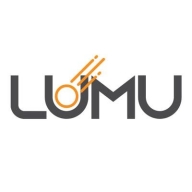

IBM Security QRadar and Lumu are highly regarded in the cybersecurity domain. QRadar offers a broad range of advanced threat detection capabilities and detailed threat intelligence, while Lumu stands out for its exceptional usability, making it the more convenient option for organizations prioritizing straightforward network analysis.
Features: IBM Security QRadar provides extensive threat intelligence, scalability, and a robust analytics engine tailored for vast network architectures. Its advanced threat detection incorporates seamless integration with external systems and built-in use cases. Lumu, on the other hand, excels in real-time network monitoring, ease of access with its intuitive platform, and quick threat identification, making it better suited for environments demanding simplicity and speed.
Room for Improvement: IBM Security QRadar could enhance its deployment complexity, aiming for a more user-friendly setup process. Additionally, there is room to further simplify its analytics capabilities and user interface. Lumu could improve its threat protection integration to offer a broader suite of defense mechanisms, enhance data consolidation from different network aspects, and expand its comprehensive network activity monitoring.
Ease of Deployment and Customer Service: Lumu offers rapid deployment with minimal complexity, coupled with responsive customer service, ensuring a seamless integration process. In contrast, IBM Security QRadar requires more specialized setup, which can be intricate, but benefits from extensive support channels to guide users through detailed implementations.
Pricing and ROI: IBM Security QRadar incurs a higher upfront cost, aligning with its extensive features and potential ROI for larger enterprises. Lumu offers a more affordable alternative, capturing value by reducing initial setup expenses and delivering quick insights, making it attractive for budget-conscious organizations.
| Product | Market Share (%) |
|---|---|
| IBM Security QRadar | 3.5% |
| Lumu | 1.4% |
| Other | 95.1% |


| Company Size | Count |
|---|---|
| Small Business | 89 |
| Midsize Enterprise | 36 |
| Large Enterprise | 102 |
| Company Size | Count |
|---|---|
| Small Business | 5 |
| Midsize Enterprise | 1 |
| Large Enterprise | 4 |
IBM Security QRadar (recently acquired by Palo Alto Networks) is a security and analytics platform designed to defend against threats and scale security operations. This is done through integrated visibility, investigation, detection, and response. QRadar empowers security groups with actionable insights into high-priority threats by providing visibility into enterprise security data. Through centralized visibility, security teams and analysts can determine their security stance, which areas pose a potential threat, and which areas are critical. This will help streamline workflows by eliminating the need to pivot between tools.
IBM Security QRadar is built to address a wide range of security issues and can be easily scaled with minimal customization effort required. As data is ingested, QRadar administers automated, real-time security intelligence to swiftly and precisely discover and prioritize threats. The platform will issue alerts with actionable, rich context into developing threats. Security teams and analysts can then rapidly respond to minimize the attackers' strike. The solution will provide a complete view of activity in both cloud-based and on-premise environments as a large amount of data is ingested throughout the enterprise. Additionally, QRadar’s anomaly detection intelligence enables security teams to identify any user behavior changes that could be indicators of potential threats.
IBM QRadar Log Manager
To better help organizations protect themselves against potential security threats, attacks, and breaches, IBM QRadar Log Manager gathers, analyzes, preserves, and reports on security log events using QRadar Sense Analytics. All operating systems and applications, servers, devices, and applications are converted into searchable and actionable intelligent data. QRadar Log Manager then helps organizations meet compliance reporting and monitoring requirements, which can be further upgraded to QRadar SIEM for a more superior level of threat protection.
Some of QRadar Log Manager’s key features include:
Reviews from Real Users
IBM Security QRadar is a solution of choice among users because it provides a complete solution for security teams by integrating network analysis, log management, user behavior analytics, threat intelligence, and AI-powered investigations into a single solution. Users particularly like having a single window into their network and its ability to be used for larger enterprises.
Simon T., a cyber security services operations manager at an aerospace/defense firm, notes, "The most valuable thing about QRadar is that you have a single window into your network, SIEM, network flows, and risk management of your assets. If you use Splunk, for instance, then you still need a full packet capture solution, whereas the full packet capture solution is integrated within QRadar. Its application ecosystem makes it very powerful in terms of doing analysis."
A management executive at a security firm says, "What we like about QRadar and the models that IBM has, is it can go from a small-to-medium enterprise to a larger organization, and it gives you the same value."
Lumu Technologies is a cyber-security company that illuminates threats, attacks, and adversaries affecting enterprises worldwide. Using actionable intelligence, Lumu provides a radical way to secure networks by enhancing and augmenting existing defense capabilities established over the past 25 years.
We monitor all Extended Detection and Response (XDR) reviews to prevent fraudulent reviews and keep review quality high. We do not post reviews by company employees or direct competitors. We validate each review for authenticity via cross-reference with LinkedIn, and personal follow-up with the reviewer when necessary.